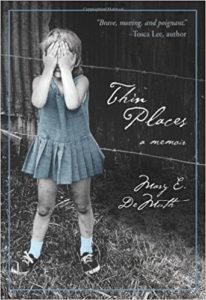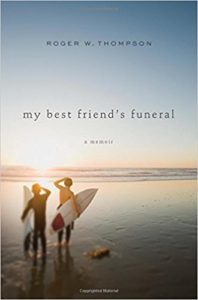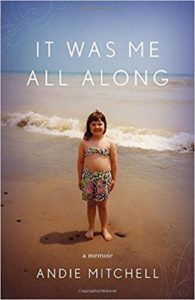Peter Lopez Jr.'s Blog: Xulon Press Blog , page 32
February 9, 2018
The Making of a Memoir Part 1: Where to Start

If I have learned anything from being an editor it is that everyone has a story to share. This great world of ours has given us experiences as varied as our fingerprints, and there is bound to be someone who will benefit from reading yours. Even if you think your life is nothing spectacular—perhaps even mundane—you probably have some nugget of insight somewhere along the way just waiting for you to dust it off and see it for the gem it is.
I’m not going to sugarcoat it: writing about yourself is hard. However, it is also rewarding and incredibly transformative. The first big question after you decide to write about your own life is where to start? To help you answer that question, I have created this series to help you write your draft and get it ready for editing.
There are two main types of books that come from writing about yourself: autobiography and memoir.
Autobiography
Based on facts over emotion
Discusses your entire life and all of the important events
May lack a distinct climax
Memoir
Still factual, but includes emotional descriptions
Discusses only one theme of your life or one major event
Definitely has a climax and follows a narrative structure
Typically includes more creative uses of description, dialogue, and characterization
Memoirs are generally more interesting to read and extend a level of intimacy to the reader. It is true that some memoirs discuss long stretches of the author’s life, including her childhood, but as long as it all works to support the main event or theme, it works. Autobiographies are all about facts, dates, and chronology. Memoirs are their impassioned cousins full of emotion, suspense, and drama.
Some great examples of memoirs to read for inspiration:
Thin Places by Mary E. DeMuth
My Best Friend’s Funeral by Roger W. Thompson
It Was Me All Along by Andie Mitchell
Girl in the Dark by Anna Lyndsey
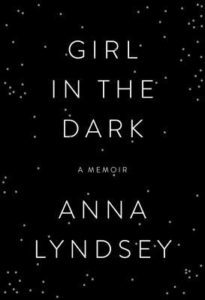
Keep reading and letting other authors’ stories inspire you. The next post in the series will help you brainstorm what events or circumstances you want to write about as a gift of experience to others. Roll around in your head what wisdom you have incurred over your life along with how you can share it with the world, and come back for how to make it happen.
The post The Making of a Memoir Part 1: Where to Start appeared first on Xulon Press Blog, Christian Self-Publishing.
February 7, 2018
How to Effectively Overcome Writer’s Block

The inevitable has happened, you’ve hit a road block in your writing. Writer’s block happens to everyone; you’re not alone!
Check out these effective and simple ways to combat that stuck feeling and help you find your writing groove.
Go For a Walk
Give your eyes a break from the screen and take a short walk around outside. The fresh air will help clear your mind, giving you a chance to step away from the story and come back fueled by new ideas. You writer’s block will be no match for your refreshed mind!
Write Through the Block
For some, the best way to overcome writer’s block is to simply write-through it. Give yourself a goal whether it’s to finish a paragraph or chapter, and continue working on it until you accomplish your goal. You’ll feel so confident knowing you defeated your writer’s block, that you’ll be able to beat it the next time it comes around.
Listen to Music
If you write in silence sometimes the quiet can be overwhelming. Too much quietness for your mind to wander. Play some classical music or other instrumental music like jazz, or any music that you enjoy. The subtle tunes playing in the background will help you drift into the zone and give you new energy to conquer writer’s block.
Brain Dump
If you’re feeling extra frustrated, walk away from your computer, grab a pen and paper or a journal and start free-writing everything on your mind. Sometimes when we focus so much on one thing for a long time, we’re unaware we’re functioning on autopilot. Taking time to do a brain dump, and write about absolutely everything and anything on your mind can help you clear your mind and reset your focus.
Start Moving
There’s always the option to get on your feet, get your heart pumping and blood flowing. Find the exercise that’s best for you, maybe it’s jogging, hula-hooping or jump roping. Whatever it is, have fun with it! After 5 to 10 minutes of cardio, you’ll feel energized and ready to tackle writer’s block.
Take a Prayer Pause
Sometimes, you just need to clear your mind and one of the best ways to do that is through prayer. The power of prayer is relaxing and healing. Asking for guidance can help you shake off negative thoughts and frustrations and help you feel renewed and ready to overcome the writer’s block.
The post How to Effectively Overcome Writer’s Block appeared first on Xulon Press Blog, Christian Self-Publishing.
June 8, 2017
The Power and Danger of Observation
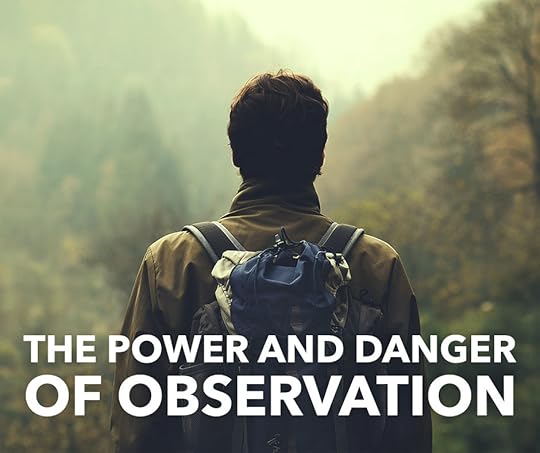
Writers continually take in the world around them, cataloguing sights, sounds, smells, and other sensations. They observe their environment with deep curiosity and awe, recording the minutiae of the unique scenes that unfold around them every day. Watching a conversation between lovers, a mother scolding her child, or a man walking alone at night can become the building blocks of a great story.
But it’s easy for us as writers to overextend our power of observation as we write. Before we know it, we are stuffing each sentence and paragraph to the seams with moment-by-moment synopses, doggedly reporting every square inch of a scene. Unfortunately, this forces the reader to wade through a pea soup fog of detailed descriptions. The weight of recorded observation can crush readers, while the simplicity of a more skeletal portrayal is usually enough to enchant them.
So how do we expand our power of observation while moderating it?
Begin with an Observation Excursion—Then Edit It
Enjoy an outing of people watching at a park, mall, or restaurant. Keep an eye out for people interacting with each other: families, couples, and friends. Try to imagine what they’re saying to one another based on their motions and facial expressions. Let your imagination have free rein, and keep a small journal with you for recording details.
Later, as you go through your journal of observations, ask yourself the following questions before integrating the details into a scene:
What made you notice that particular person or scene in the first place?
What details grip your memory without you really knowing why?
Which details evoke an emotion or a memory from your own life?
How does this detail connect to the broader scope of your plot or characterization?
Even if you have a lot of material to choose from, these questions will help you choose the best options to use in your story. As you integrate the details into a scene, keep close watch to ensure that you don’t copy the people, places, and action that you observed verbatim. Hold out for just the one or two shining details that speak to. Use them as a starting point, allowing your own imagination to fill in the rest.
Limit Your Adjective Use
Comb through your pages and search for sentences that use two or more adjectives for a single item. Anything beyond this exponentially detracts from the power of each descriptive word, dragging down your reader’s mental wherewithal.
Remember, while you have creative license to craft your scenes as you see fit, you also want to invite your reader into the wonderful work of imagination. Let them take creative ownership over the story as well by imagining the shade of the heroine’s hair or the exact tone of her husband’s voice. Allowing the reader to create the story alongside you is vital for helping them bond with it.
Keep Paragraphs at a Manageable Length
Do you find that your paragraphs are swelling with extra descriptions of settings? Look through your manuscript for paragraphs that take up the entire page with their description of physical features, and put on your editor’s cap to weed them down. This will prevent you from trying to squeeze in every last detail of the living room, pushing you to focus on the conversation between the couple in the scene instead.
Balance Description with Action and Dialogue
If you’re writing fiction, a telltale sign of over-describing is the absence of dialogue between characters. If you find that it takes five pages in a chapter before you get to character interaction, you can safely assume that too much description and “telling” is taking place. Remember that your reader is more interested in the characters populating the scene than in the setting itself.
Even trying to describe a character’s backstory in too much detail can be counterproductive. While it’s helpful to get some contextual information, it’s far more enjoyable to watch the action unfold in the present than to get long descriptions of their past.
The post The Power and Danger of Observation appeared first on Xulon Press Blog, Christian Self-Publishing.
May 22, 2017
Writing Tips for Poets
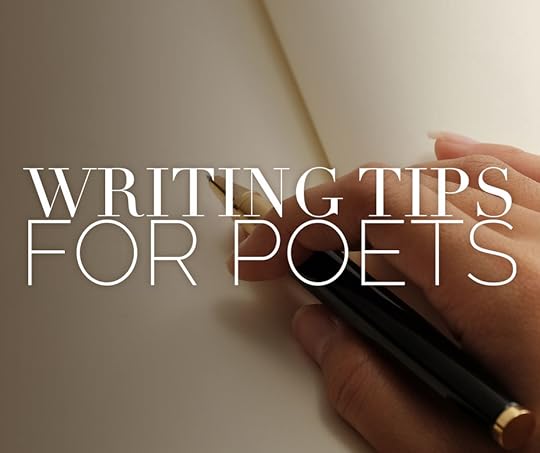
Here at Xulon Press, we regularly see wonderful collections of devotional and creative poetry. Poetry is an art form that pours from the heart, encompassing a wide range of passions, from joy and thanksgiving to sorrow and grief. But poetry is both beloved and reviled, with many readers feeling uncertain of how to interact with such a subjective genre.
Indeed, poets themselves often struggle with the balance between artistic license and necessary structure when penning their poems. To help navigate these difficulties, we have a few basic poetry tips for how to write and publish your best poetic work.
Clarifying Your Intentions
Many of the poets we work with mention their lifelong dream to publish and the work of the Holy Spirit in inspiring their work. While these motivations are noble, keep in mind that your writing should be for your reader’s enjoyment in addition to your own personal fulfillment.
While many poets feel compelled to introduce their work, explaining their passion for writing and their desire to use their God-given talent, such statements put their desire to publish at the forefront of the reader’s mind as opposed to the poems at the heart of the book. As a result, these types of introductions, intended to sway readers to buy a copy, may do the opposite.
As you write, keep the reader’s experience in mind. Write from a unique point of view, but in an accessible and enjoyable manner. When it comes to introducing your work, consider letting your poems speak for themselves. Or, ask a fellow poet to contribute a foreword to discuss the merits of your work.
Organizing Your Poems
Many of the poetry collections we see are compilations of an entire lifetime of writing. These manuscripts are often organized chronologically in the order of writing. Some have no intentional organization to speak of. But failing to provide a clear thematic connection from poem to poem can make your collection difficult for readers to understand and enjoy.
Organization provides a helpful framework upon which your work can shine all the brighter. Try organizing your collection into part sections by theme or topic. For instance, a book of poems written after the death of a loved one could be organized using the five stages of grief. A book of devotional poetry could be organized by the attributes of God. The options are endless!
Writing with Consistency
Some poets like to mix and match writing styles within their collections, placing a haiku next to an acrostic poem followed by a sonnet. While poets have creative license to determine which style (or lack thereof) to apply to their poems, maintaining some consistency gives the reader a smooth and measured reading experience.
Even if you would like to experiment with different styles of poetry within your collection, consider grouping them by style. Once you’ve selected a style for a poem, use it consistently throughout each stanza. If your poetic framework calls for a certain rhyming structure, adhere to it faithfully. Having each beat land properly in its meter creates a pleasing and steady rhythm for your reader to enjoy.
Formatting Poetry
Poets have free rein to visually organize their work in ways that writers of prose can’t. Indentation, centering, line breaks, and other formats are fair play for the poet’s creativity. But keep in mind that the overuse of such visual scrambling can be overwhelming to the reader, and each use lessens the impact.
When using unconventional formations for your poems, ensure that you have a compelling reason to do so. Is it important for you to insert a tabbed space between two words? Does it add meaning to the poem to hang letters vertically down the page? How does it help to center the poem rather than left-justifying? Test yourself with these questions before mixing up your poetic organization. Your reader will thank you for doing so!
The post Writing Tips for Poets appeared first on Xulon Press Blog, Christian Self-Publishing.
Multiple Narrators, One Story, No Sweat!
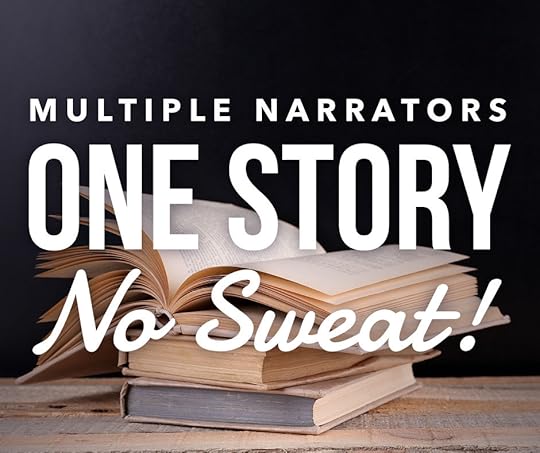
You can find it in fiction, non-fiction, even in cookbooks: more than one person narrating different portions of the book to offer various perspectives, beliefs and even manners of speaking (or writing in this case).
If an author were interested in utilizing multiple narrators in his/her story, there needs to be considerations made to display the differences between the narrators. You don’t want many people supposedly narrating the story, but it appear only one person is describing the events of the story.
As you craft your narration, think about the ages of the narrators. One example I came across while reading one manuscript was siblings of various ages narrating. The author’s writing should center most on the experience levels of the siblings: the older sibling would be more articulate in statement and recall more in memory than the younger sibling, who seemed more focused on personal emotion and simpler aspects of life.
In the same mindset of age, gender can also be a factor of difference between narrators. Boys/men may concentrate on the action within their circumstances or how they would solve a problem, while girls/women tend to focus on their emotional connections to things/people.
If your narrators are from different time periods, such as in a flashback, the author needs to make sure that what is discussed by each narrator caters to what they have experienced at that point in time. Let these characters’ backgrounds shape how they interpret events and feelings about who they are.
Outside of narration styles, it is important to designate in content when narrators change so there isn’t any confusion as to who is talking at different times. On the flip side, you also wouldn’t want to add multiple narrators if only one narrator would suffice in giving a logical perspective to the story.
So, now what?
Pondering on these qualities of multiple narrators will benefit your manuscript as the similarities and differences can bring out certain events within the story and allow them to be more realistic to readers. Getting into the mentalities of these characters will keep the story moving forward if there are any lulls in action or suspense, while also connecting to readers on an intimate level.
The post Multiple Narrators, One Story, No Sweat! appeared first on Xulon Press Blog, Christian Self-Publishing.
May 8, 2017
Commonly Misused Words—and How to Avoid Them
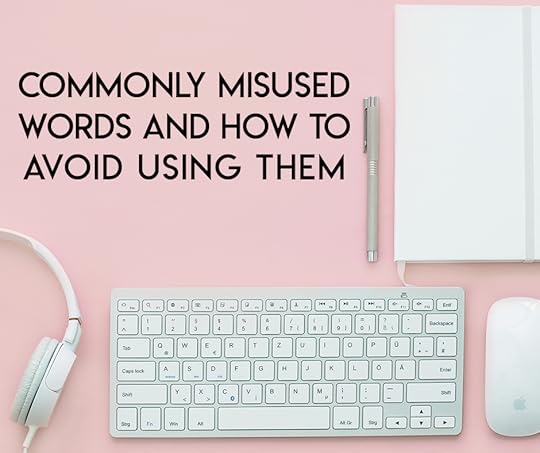
We’ve all been there, whether we’re thumb-typing a text (curse you, autocorrect!), drafting a resume, or sending an email to our boss: after hitting “send” we realize we’ve misusing a word that has a doppelganger with a completely different meaning. Just as this happens regularly in everyday communication, commonly misused words regularly litter the pages of the manuscripts that hit our desks (or ping our inboxes).
Examples of commonly misused words
While editing manuscripts, I like to keep a running list of both cringeworthy and humorous misused words. In recent history, I’ve come across the following incidents:
Passed rather than past
Deerly rather than dearly (i.e., “I love you deerly.”)
Ease-dropping rather than eavesdropping
Preverbal rather than proverbial (i.e., “She developed her preverbal backbone.”)
Color pallet rather than color palette
Alkaloids rather than accolades
Even the venerable Microsoft Word often cannot be trusted when it comes to misused words. Unfortunately, Word’s editing software often is not perceptive enough to discern key differences in wording and turns of phrase. For instance, in a manuscript I recently edited, Word’s spell check insisted that “Her dear husband” needed to be “Her dead husband.” What a difference that small change would have made!
Key strategies for catching misused words
While misused words are slippery rascals to locate, there are several helpful strategies that you can employ to locate and resolve these embarrassing errors prior to publication:
Read through your manuscript aloud. Reading your manuscript aloud helps you hear grammatical errors and makes you focus more on each word rather than skimming over mistakes while reading internally from the screen.
Keep a dictionary site open as you write. Professional editors usually have the Merriam-Webster.com tab open while working on a manuscript. I often copy and paste words from a manuscript into Merriam-Webster’s search bar to confirm spelling and usage. As the author, take time to go back through your manuscript using this tool. If you’re unsure about the meaning or spelling of a word or phrase, take time to dig deeper. When in doubt, look it up!
Check out the Chicago Manual of Style’s list of commonly misused words and phrases. This resource is practically the editor’s Bible when it comes to grammar, style, and usage. The CMOS helpfully devotes an entire section of chapter 5 to a glossary of problematic words and phrases, titled, “Good usage versus common usage.” Take time to read through this guide, and after time, you’ll learn to easily identify improperly used words and phrases. Most of the time, it simply comes down to memorizing and double-checking rules for proper use.
Purchase an editing service. While you as the author can and should weed misused words out of your writing, it’s always beneficial to have a professional come to your work with a fresh pair of eyes. Editors are used to locating misused words and phrases, and can help by calling out errors that have slipped past you and offering simple solutions.
Good luck and bon voyage on your journey to rid your writing of pesky misused words!
The post Commonly Misused Words—and How to Avoid Them appeared first on Xulon Press Blog, Christian Self-Publishing.
April 25, 2017
How to Pick the Right Title for Your Book

The moment has finally arrived: you’ve finished writing the book you’ve dreamed of and labored over devotedly. Now the time has come to brand it with a title and send it out into the world. But what will you call it? How can just a few words embody everything about your glorious book?
Fear not, for we have a few fail-proof tips that can help you get started on the journey of picking a concise and catchy title for your book.
Hook the Reader
You want the title to be something epic and unforgettable. It should jump out at readers as soon as their eyes skim over the spine at the bookstore or when they spot the cover online. Just by reading the title, your reader should get some idea of the book’s genre and content. Try to land on a word or phrase that communicates the tone and topic while still maintaining some mystery. You want your title to hook the reader without hitting them over the head with it, so keep it short, simple, and alluring.
Draw Inspiration from Your Favorite Quotations
If you’ve already completed your manuscript, read back through your favorite paragraphs to see if any phrases or expressions jump out at you. Find a line that you’re particularly proud of and see if a few words or a phrase from it could work well as the title.
Another great option is to look for inspiration outside of your own writing. Does a famous saying fit well with the themes of your book? Is there a phrase from Scripture that sums up the message or tone of your work? Even famous authors William Faulkner (Absalom, Absalom!) and Ernest Hemingway (The Sun Also Rises) used this technique when naming their books.
Using a Subtitle is Key
Nothing is as beneficial to your book as a simple but punchy subtitle. In works of nonfiction, having a great subtitle allows you to be more mysterious with your main title, letting the subtitle do the work of clarifying the book’s content. If you’re writing your life story, a subtitle as simple as A Memoir gives an air of intimacy and authenticity while also communicating the genre. If you’re writing a work of biblical studies or theology, the subtitle can clarify what topic you’re focusing on, whether it be a particular book of the Bible or a systematic exploration of the nature of God.
In works of fiction, using the simple two-word subtitle A Novel can be a game-changer. While this may seem obvious, many authors fail to realize that their novel’s title may not actually communicate to the reader that the book is a work of fiction. You don’t want someone to preview the first few pages of your book and be uncertain if it’s your life story or a fabricated tale. Using A Novel as your subtitle will help the right readers connect with your work.
Finally, for poet’s publishing their first collection, no subtitle is as clear and inviting as Poems.
Check Amazon before Choosing a Final Title
Nothing is worse than finally settling on the perfect title for your book, then going online and seeing that hundreds of other authors have already used it—or one like it—for their book. Just like in fashion, trends for book titles come and go. Recently, a plethora of novels with Girl or The Girl in the title have been released after the success of Stieg Larsson’s The Girl with the Dragon Tattoo, Gillian Flynn’s Gone Girl, and Paula Hawkins’s The Girl on the Train. News outlets from USA Today to The New York Times have commented on this ongoing trend. While it’s helpful to pick a title that naturally aligns with genre norms, you don’t want a prospective reader to accidentally purchase the wrong book just because your title is similar to your competitors. Use Amazon for research to find a truly unique title that will set your book apart.
The post How to Pick the Right Title for Your Book appeared first on Xulon Press, Christian Self Publishing.
March 29, 2017
Why Social Media Posts Do Not Make A Book

Since I began working at Xulon almost three years ago, I’ve noticed trends come and go from the hundreds–wait, probably thousands by now–of manuscripts I’ve read, reviewed, critiqued, and edited. Recently, one of the trends I’ve noticed is authors turning their social media posts into books.
Allow me to explain.
There are so many social media platforms now, whether it’s Facebook, Twitter, Instagram, Pinterest, or Snapchat, they’re all here to serve a different purpose: post pictures, post videos, post a status, or send a message. While their deliveries may vary (pictures, videos, 140-character limit status), they all serve one person: ourselves.
We post on these social media platforms to share ourselves with our friends or our connections. We feel gratification when someone “likes” or “loves” or even responds to our status, picture, video, or article we’ve shared. It’s all about us on social media. So turning our Facebook statuses for “Things I’m Thankful for in November” into a book should be a no-brainer, right? I mean, these are such good things to be thankful for, and people love what I’m thankful for each day! So I should publish that in a book to reach even more people, right?
Wrong.
And here’s why: while social media is all about us, and receiving the “likes” or the love, writing a book is not about us. Writing a book is about other people. It’s about our readers. Why would a reader spend a week, a month, however long it takes them to read a book, to read something that has absolutely nothing in it for them? Because they wouldn’t do that.
The point of us reading a book typically falls into one of two reasons: to educate ourselves, or to entertain ourselves. If we aren’t feeling educated or entertained by reading a book, then we aren’t going to want to continue to read it. Simple as that.
Books are about your readers, not about you. It’s about helping your readers–whether you’re educating them or you’re entertaining them. It’s about making sure readers get something out of your book, whatever that “something” may be.
Copying and pasting Facebook statuses or tweets is not enough for a book, or better yet, does not a book make. Not only does it serve virtually no purpose to your readers, but it shows to your readers. It shows the little effort you as the author put into this book, and you know what they say–what you put into something is what you get out of it. Put in a lot of effort and energy, and get a lot of readership and energy back. Put in little effort and energy and, well, you aren’t going to get a lot of readership or energy in return.
Now, don’t get me wrong entirely.
You’re welcome to use a Facebook post, or a tweet, or even a Snapchat as inspiration for writing a book. In fact, we encourage it! That’s a great thing about social media: it’s easy to share your creative side and in turn, be inspired. However, creativity requires time, thought, and execution from you, the creator.
The post Why Social Media Posts Do Not Make A Book appeared first on Xulon Press, Christian Self Publishing.
Why Social Media Posts Do Not a Book Make
 Since I began working at Xulon almost three years ago, I’ve noticed trends come and go from the hundreds–wait, probably thousands by now–of manuscripts I’ve read, reviewed, critiqued, and edited. Recently, one of the trends I’ve noticed is authors turning their social media posts into books.
Since I began working at Xulon almost three years ago, I’ve noticed trends come and go from the hundreds–wait, probably thousands by now–of manuscripts I’ve read, reviewed, critiqued, and edited. Recently, one of the trends I’ve noticed is authors turning their social media posts into books.
Allow me to explain.
There are so many social media platforms now, whether it’s Facebook, Twitter, Instagram, Pinterest, or Snapchat, they’re all here to serve a different purpose: post pictures, post videos, post a status, or send a message. While their deliveries may vary (pictures, videos, 140-character limit status), they all serve one person: ourselves.
We post on these social media platforms to share ourselves with our friends or our connections. We feel gratification when someone “likes” or “loves” or even responds to our status, picture, video, or article we’ve shared. It’s all about us on social media. So turning our Facebook statuses for “Things I’m Thankful for in November” into a book should be a no-brainer, right? I mean, these are such good things to be thankful for, and people love what I’m thankful for each day! So I should publish that in a book to reach even more people, right?
Wrong.
And here’s why: while social media is all about us, and receiving the “likes” or the love, writing a book is not about us. Writing a book is about other people. It’s about our readers. Why would a reader spend a week, a month, however long it takes them to read a book, to read something that has absolutely nothing in it for them? Because they wouldn’t do that.
The point of us reading a book typically falls into one of two reasons: to educate ourselves, or to entertain ourselves. If we aren’t feeling educated or entertained by reading a book, then we aren’t going to want to continue to read it. Simple as that.
Books are about your readers, not about you. It’s about helping your readers–whether you’re educating them or you’re entertaining them. It’s about making sure readers get something out of your book, whatever that “something” may be.
Copying and pasting Facebook statuses or tweets is not enough for a book, or better yet, does not a book make. Not only does it serve virtually no purpose to your readers, but it shows to your readers. It shows the little effort you as the author put into this book, and you know what they say–what you put into something is what you get out of it. Put in a lot of effort and energy, and get a lot of readership and energy back. Put in little effort and energy and, well, you aren’t going to get a lot of readership or energy in return.
Now, don’t get me wrong entirely.
You’re welcome to use a Facebook post, or a tweet, or even a Snapchat as inspiration for writing a book. In fact, we encourage it! That’s a great thing about social media: it’s easy to share your creative side and in turn, be inspired. However, creativity requires time, thought, and execution from you, the creator.
The post Why Social Media Posts Do Not a Book Make appeared first on Xulon Press, Christian Self Publishing.
March 22, 2017
Grammatical Gray Areas: Subject-Complement Agreement

Celebrating National Grammar Day and National Proofreading Day
March is a month that calls for grammar nerds—like us—to celebrate. After all, March 4 is National Grammar Day, and March 8 is National Proofreading Day. On days like these, authors, editors, and proofreaders finally get the respect we deserve! (Oddly enough, I’m still waiting for my Grammar and Proofreading Day gifts to come flooding in. . .)
In all seriousness, we editors at Xulon Press have a passion for proper grammar usage. To celebrate grammar rules and style, we’d like to discuss a not-so-rare gray area that comes up frequently in nonfiction Christian writing: subject-complement agreement.
What is Subject-Complement Agreement?
The venerable Grammar Girl explains in her post “What Is Subject-Complement Agreement?,” quoting from The Writer’s Digest Grammar Desk Reference, that “a complement . . . is a noun that completes meaning.” Pretty simple, right? Sometimes . . . but not always.
We often see cases where a plural subject could either have a plural or singular complement—and still sound awkward no matter which you choose. For example, I recently found this sentence in a manuscript I was editing: “Through His work in the heart of sinners, God transforms them into His image and likeness.”
In the sentence above, the author means that God changes the one heart of each individual sinner. But obviously this has happened (and still happens) to an innumerable plural group over the history of humanity. So, do we use singular heart to show that each sinner only has one heart to be worked on? Or do we use plural hearts to show that God works on many different hearts simultaneously?
A Subjective Solution
While editors like black-and-white grammar rules, many decisions in editing come down to personal preference, maintaining the author’s voice, and striving for clarity for the reader.
In our example above, some readers may think “His work in the heart of sinners” sounds normal, while others might think it sounds awkward. Either heart or hearts could be used, pleasing some and confusing others.
But we like to go beyond what’s simply acceptable to make sure that each sentence sounds natural. For that reason, many editors propose a simple—but not often utilized—solution: reorder the sentence to remove the problematic phrasing!
Our sentence above could easily be rearranged to present a singular subject with a singular complement: “God transforms the sinful man into His likeness by working on his heart.”
In closing, we invite you to celebrate National Grammar Day and National Proofreading Day by reflecting on the fact that sometimes grammar doesn’t have hard-and-fast rules—and that’s when it gets interesting!
The post Grammatical Gray Areas: Subject-Complement Agreement appeared first on Xulon Press, Christian Self Publishing.
Xulon Press Blog
- Peter Lopez Jr.'s profile
- 8 followers


